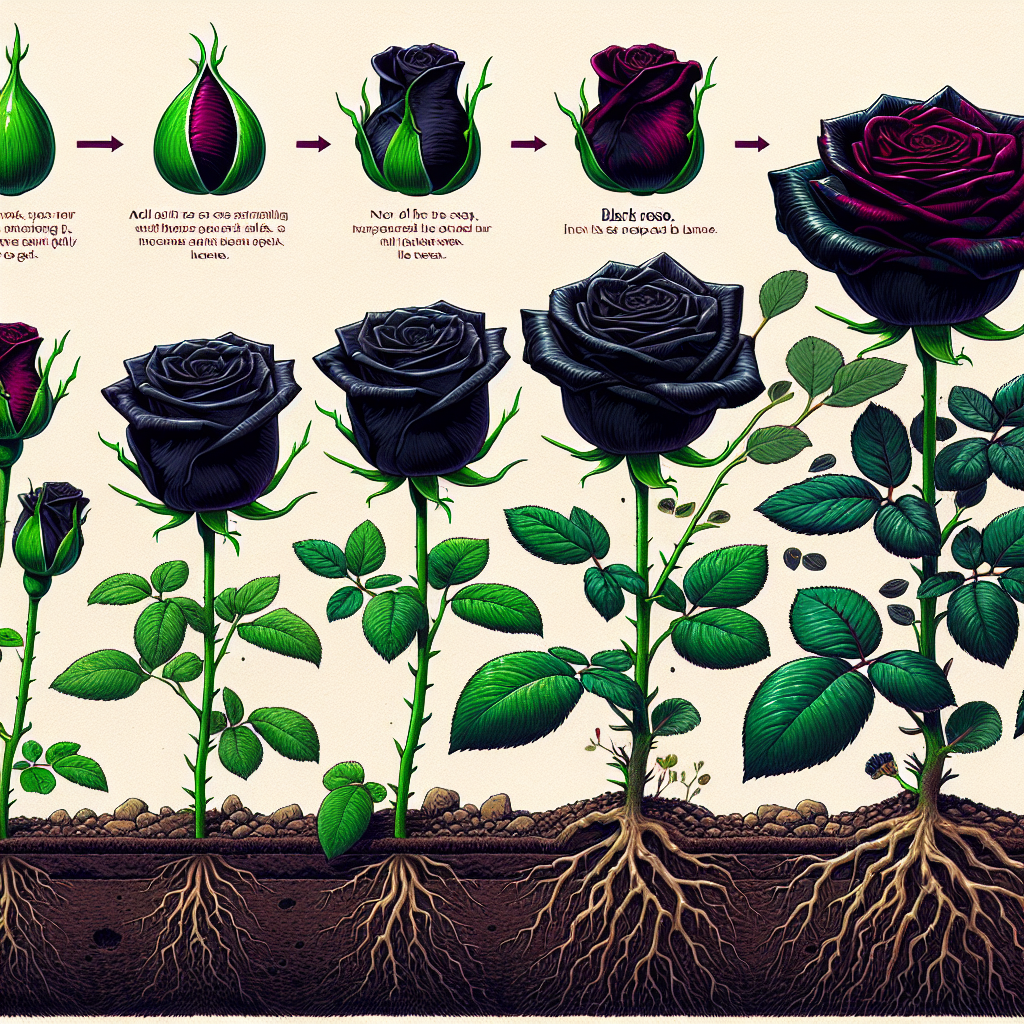
How do black roses grow
Unveiling the Mystery: How Do Black Roses Grow?
Black roses have long captured the imagination and intrigue of flower enthusiasts due to their rarity and unique allure. Often associated with themes of mystery, elegance, and even forbidden love, these dramatic blooms are not naturally occurring in the wild. Instead, they are produced through selective breeding techniques and careful cultivation. In this article, we will explore the fascinating world of black roses, including how they are grown, their significance in different cultures, and tips for cultivating your own vibrant floral masterpiece.
The Genetics Behind Black Roses
Understanding how black roses grow begins with a grasp of their genetic background. True black roses do not exist in nature; rather, what we refer to as "black roses" are typically very deep shades of red, maroon, or purple. Some of the most popular black rose varieties include:
- Black Baccara
- Black Velvet
- Midnight Blue
The dark coloration arises from a high concentration of anthocyanins, pigments that produce red and purple hues in many plants. Breeders select for these traits over generations to create the stunning flowers we admire today.
Proper Conditions for Growing Black Roses
When it comes to growing these exquisite blooms, creating an optimal environment is essential. Here’s what you need to establish:
- **Soil Type:** Black roses thrive in loamy, well-draining soil rich in organic matter. A pH level of around 6 to 6.8 is ideal.
- **Sunlight:** These flowers require full sun exposure, ideally at least six hours of direct sunlight each day.
- **Climate:** Black roses generally flourish in temperate climates with moderate humidity levels.
- **Watering Needs:** Consistent watering is key; the soil should be kept moist but not waterlogged.
Steps to Cultivating Black Roses
Now that we understand the foundational needs, let’s delve into the practical steps needed to grow black roses successfully.
- Choose the Right Variety: Select a black rose variety suited to your climate and soil conditions.
- Prepare the Soil: Amend the soil with compost to enhance its quality, ensuring it drains well.
- Planting: Plant the black rose bushes in the spring after the last frost. Dig a hole twice the size of the root ball, place the plant, and fill with soil.
- Water Regularly: Water the plants immediately after planting and continue regular watering. Be cautious not to overwater.
- Fertilization: Use a balanced fertilizer every six weeks during the growing season to promote healthy growth.
- Pruning: Regularly prune your black roses to encourage air circulation and remove any dead or diseased wood.
- Watch for Pests and Diseases: Keep an eye out for common pests like aphids and spider mites, and treat any issues promptly.
The Cultural Significance of Black Roses
Black roses have deep cultural roots and symbolic meanings in various contexts. They are often linked to:
- Love and Mourning: Due to their dark color, black roses are frequently associated with death, mourning, or unrequited love.
- Pride and Rebellion: Some view black roses as symbols of defiance and strength, representing an uprising against the norm.
- Symbol of New Beginnings: In certain cultures, they signify new beginnings despite their somber hue, implying a transformation or change.
"In the garden of life, sometimes we must embrace the darkness to appreciate the beauty of the light." - Anonymous
Challenges in Growing Black Roses
While growing black roses can be immensely rewarding, it can also present challenges. Here are some key issues you might encounter:
- **Disease Outbreaks:** Black roses can be susceptible to diseases such as black spot and powdery mildew, particularly in humid conditions.
- **Pest Infestations:** Aphids, spider mites, and whiteflies are common pests that may threaten your rose bushes.
- **Color Variation:** Sometimes, black roses may not maintain their dark hue due to varying climatic conditions, resulting in lighter blooms.
Harvesting and Caring for Black Roses
After successfully growing your black roses, the next step is learning how to properly harvest and care for them:
- Timing the Harvest: It's best to cut your roses in the early morning when temperatures are cooler.
- Use Sharp Tools: Always use clean, sharp shears to reduce damage to the plants.
- Display and Care: If you're displaying your black roses, ensure they have enough water and are kept away from direct sunlight to prolong their beauty.
Conclusion: The Allure of Black Roses
Growing black roses is a rewarding endeavor filled with beauty and challenges alike. Whether you are a passionate gardener or simply intrigued by the mystery of these stunning blooms, understanding how to cultivate and care for them will enhance your appreciation for their unique charm. By providing the right conditions and adhering to the maintenance tips outlined above, you can enjoy a beautiful array of black roses, adding elegance and drama to your garden.
As we have explored throughout this article, how do black roses grow encompasses not just their physical requirements but also the emotional and cultural significance that these extraordinary flowers hold. With patience and dedication, anyone can revel in the enchanting experience of nurturing these gothic beauties.
```By Guest, Published on October 15th, 2024